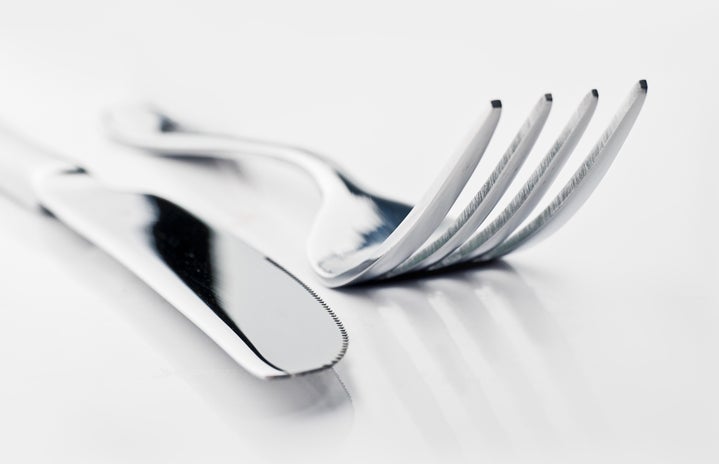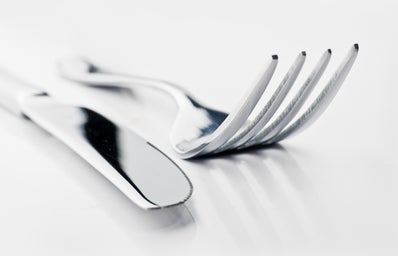Edited by Sophia Savva
If you’ve ever looked at a cocktail menu at a bar, it’s not hard to see that there’s a variety of different drinks to choose from, and even the “classics” have fairly interesting names. I personally stick to my rum-and-cokes or whiskey sours mainly because names like “old fashioned” or “highball” give me little to no indication as to what’s in them. However, curiosity got the best of me and I couldn’t resist researching the origins of some popular cocktails, where they got their names from and how they got so popular. So sit down, have your whiskey on the rocks (or whatever suits your fancy), and enjoy some history facts on some of your favourite mixed drinks.
Gin and Tonic
As the name suggests, a gin and tonic is a simple drink of few ingredients, but I was surprised to read that it had been one of the reasons for the British Empire’s success, to the point where Winston Churchill once declared the gin and tonic “saved more Englishmen’s lives, and minds, than all the doctors in the Empire.”
The key success to being able to colonize countries like India was being able to control and prevent malaria, a disease that only became a threat to colonizers when they began to invade tropical locations which bore mosquito born diseases and faced a serious and mortal threat. In the 17th century, the Spanish discovered that indigenous peoples of present-day Peru used bark from the cinchona tree to treat and prevent malaria. The bark was an active ingredient in quinine powder, which was a powerful medicine against the disease.
By the 1840s, British citizens and soldiers in India were using 700 tons of cinchona bark annually in quinine. However, quinine had such a bitter taste that British officials stationed in India and other tropical posts mixed quinine with soda and sugar, or as we like to call it, “tonic water”. Additionally, it was not uncommon for officials to combine their daily dose of tonic with a bit of gin to make it go down easier, hence the birth of the gin and tonic. Who knew that a relatively simple yet popular drink could have had colonial undertones in its history?
Whiskey Sour
Another fairly effortless drink also has its ties to the history of medicine. Around the 20th century, sea travel from Europe to North America meant food and water would spoil over a month-long trip, and refrigeration and the concept of germs had been little to none. Sailors had suffered from scurvy and sea-sickness along these trips, and the way to prevent it had been limes and lemons, which were supplied in rations during their trips. A bartender named Vice Admiral Edward Vernon of England began mixing drinks to serve to his crew. To prevent intoxicated shipmates, he would water down the liquor with lemon or lime juice to mask the flavour, hence the early version of the mixed drink.
So where did the whiskey in the recipe come from? When sailors brought this recipe to shore, Gin and Brandy had been substituted by the English for the cocktail, and the Americans preferred the native and the more easily-obtained whiskey as the liquor. Jerry Thomas eventually refined and published the recipe with whiskey as the main liquor, as we know it today.
Mojito
Another pub favourite, I personally prefer mojitos over the summer because of the freshness of the mint and ice. The mojito takes its roots back to Cuba during a time when rum was hardly something to enjoy: a fierce and funky spirit fused with oils and “other noxiousness”. To make it more palatable, Cuban farmers who had a long night ahead would put in what they could to down it easier: fresh squeezed lime, sugar cane juice, and mint, which became the earliest “idea” of a mojito. The word mojo means “to place a little spell” which fits the story of the drink being made from aguardiente de cana or “firewater of the sugar cane”.
Another version of the history comes the 1500s, when Sir Francis Drake landed in Havana to exploit their gold. His crew had been suffering from dysentery and scurvy, and the cure was found in ingredients found from local South American Indians who were known to have remedies. They used aguardiente de cana, along with mint leaves, sugar cane juice, and limes to create an effective tonic for the diseases. The concoction was called “El Draque”, probably named after Drake.
The Spanish word mojadito means “a little wet” and the lime-based seasoning was called mojo. Bacardi was responsible for its spread and growth in popularity when it was made in the mid 1800s, and then Ernest Hemingway’s likening to it in Le Bodeguita Del Medio.
Long Island Iced Tea
Another mixed drink with a muddled origin story, there are many theories as to who invented this crazy drink first.
One origin story claims that the drink was not invented in Long Island, New York, but rather in a community called Long Island in Kingsport, Tennessee in the 1920’s. One origin story claims a man called Old Man Bishop invented the Long Island iced tea. Apparently, Bishop threw together a drink using rum, vodka, whiskey, gin, tequila, and maple syrup. The large amount of liquors in the drink could have been due to prohibition, where alcohol was scarce and drinks needed to pack a punch. He passed on the recipe to his son, Ransom Bishop, who refined the recipe in the 1940s.
Another figure claims to be the first to invent the drink in the 1970s, a man by the name of Robert “Rosebud” Butt. In 1972, Bob Matherson created a contest where contestants had to create a drink using triple sec as the main ingredient, hosted by Oak Beach Inn East in Hampton Bays, Long Island. Rosebud happened to be working that day and started to mix vodka, gin, rum, tequila, sour mix, triple sec, and Coke for colour. Though the bartender acknowledges that similar recipes may have been created at a different time and different place, Butt firmly believes he is the true original maker of the famous drink.
There are other sources that say that housewives created the concoction using small amounts of liquor to conceal the fact that their husbands’ liquors were slowly dwindling.
The origin of this drink is just as murky as the memories made by consuming it, so maybe that’s what gives this drink its mystery.
Sex on the Beach
I’ve always seen this one on bar menus and always questioned how and where the name came from. Well, here it is.
The earliest known invention of the drink dates to 1987 in Florida, USA. When peach schnapps appeared on the market around autumn and during the spring holiday, the distributor decided to create a contest which would pay the bar that sold the most peach schnapps, along with an additional $1000 and $100 to the bartender who got the highest sales at the winning bar.
A bartender named Ted working at Confetti’s Bar in Florida mixed a drink of peach schnapps, vodka, orange juice, and grenadine. When asked for the name of the cocktail, he on the spot said “Sex on the Beach”, claiming that the main reason people came to Florida for spring break was for the beach and sex. Gaining popularity by the obviously enticing name, Ted and Confetti’s Bar won the competition and ultimately led to it being a popular ordered drink.
Moscow Mule
The final origin story we’ll be talking about is the Moscow Mule, the vodka cocktail served famously in a copper mug.
Back in the 1940’s, vodka was an unpopular liquor in the United States due to people joking that vodka was Russian for “horrible” (my fluency in Russian can let you know that that’s most certainly not the case). John G. Martin had decided to buy the U.S rights to the French Smirnoff brand of vodka in 1939 and quickly found that his newly acquired liquor was not selling. Jack Morgan, Martin’s friend who owned the Cock ‘n’ Bull in Los Angeles, also faced a similar problem selling his ginger beer. There are also sources that speak of a third business man who couldn’t move his copper mugs, either.
With combined efforts and a squeeze of lime later, the Moscow Mule had been created. There are some sources that say that the head bartender of Cock ‘n’ Bull, Wes Price, had made the original Moscow Mule recipe, and the businessmen decided to lay claim on it for marketing purposes.
According to mixologists, the copper makes the acidity of the lime and the carbonation of the ginger beer more pronounced, hence why it may still be used today. The “mule” in the name may potentially come from the fact that the drink gives a “kick”.

